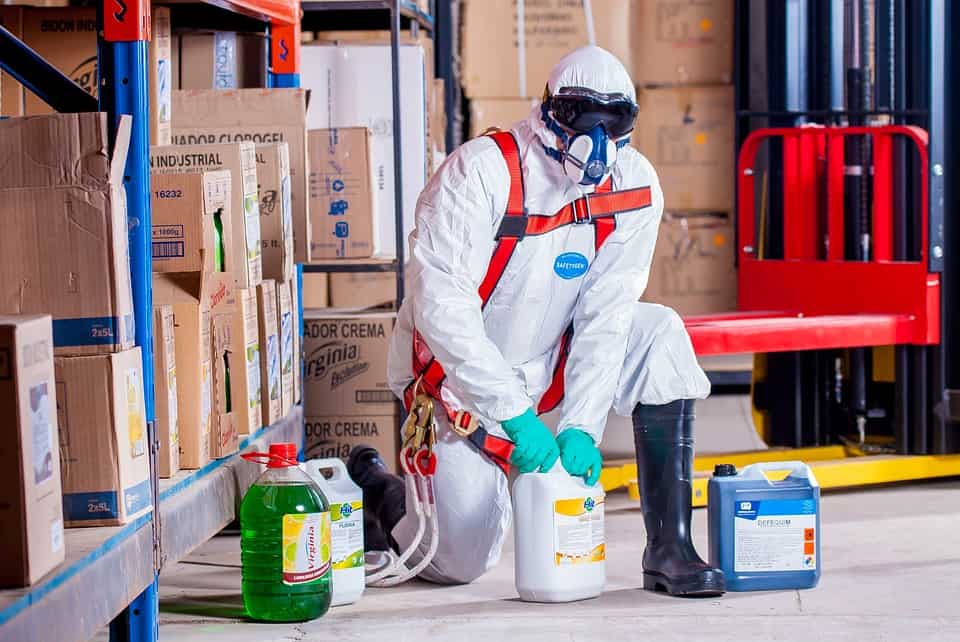Featured image by Voltamax on Pixabay
The Occupational Safety and Health Administration (OSHA) is a federal agency created to protect the safety of all U.S. workers. They put safety regulations in place to prevent job-related injuries, illnesses, and death from occurring at workplace. These regulations are important to follow since they also protect your business from harm.
Reviewing an OSHA compliance guide extensively helps businesses ensure they’re not violating any regulations. Failure to do so could result in some serious consequences. Some consequences can include fines, citations, and even possibly the closure of your business. Here are some ways you can help prevent OSHA violations from occurring in your workplace.
Ergonomics and Workplace Conditions
OSHA requires that your business provide a workplace free of hazards and safe for all employees. That means ensuring the safety of everything from the height and condition of equipment used by employees to the type of work they will be doing regularly. You can prevent many injuries or hazards and protect your business through proper ergonomic training.
It’s also important to ensure that all work areas are free of tripping hazards, sharp edges, and other dangerous conditions. OSHA also mandates employers provide protective equipment to employees that is appropriate for the work they will be doing regularly. Following these mandates will protect your business long-term.
RELATED ARTICLE: WORKPLACE ACCIDENT? 5 FREQUENTLY ASKED QUESTIONS
Safety Training
Hazardous conditions aren’t the only health and safety issues you should be concerned about regarding OSHA regulations. Provide all employees with adequate training on properly using any equipment or materials that may be hazardous. For example, with certain tools, chemicals, and machinery they will be using on the job.
If you fail to provide any employees with proper safety training, you could face fines or citations. Consider providing ongoing safety training programs to all employees on an ongoing basis to further protect your business.
Hazard Communication

OSHA requires that employers provide all necessary information about chemicals used in the workplace to their employees, including proper labels on containers of these chemicals. You must also train employees how to handle the chemicals safely before they ever come into contact with them.
This is done through the use of Material Safety Data Sheets (MSDS). For instance, you should separate water for drinking or cleaning from the chemicals used in your workplace. Also, employees must have easy access to an eyewash station.
Creating a Safety Committee
Many small businesses fail to implement effective health and safety policies simply because they lack the resources or expertise needed to protect their business. This can be especially true when developing comprehensive workplace safety programs that comply with OSHA regulations.
The best solution is often to create a safety committee composed of employees who can help develop and implement your company’s overall health and safety program. This will make it much easier to identify unsafe conditions in your workplace. They will also advise management on how best to correct them.
RELATED ARTICLE: PROMOTE A SAFE WORK ENVIRONMENT TO KEEP EVERYONE SAFE AT WORK
Employee Exposure to Hazards
OSHA requires employers to monitor the condition of any work environment that could be potentially hazardous. That means having employees conduct air quality tests for safety purposes and checking for things like electrical hazards and toxic wastes that may appear in the work environment.
Conduct these tests regularly and immediately address any identified issues. This will protect your business of any unnecessary hazards. If your business doesn’t already have an established safety program to monitor environmental conditions, it’s time to create one.
Having Effective Incident Reporting Procedures
OSHA requires employers to investigate any accidents or injuries that occur at work immediately. Maintain an accurate log of every incident that occurs, including the date and time it happened, as well as a detailed account of what transpired.
For example, if an employee is injured when using a piece of equipment, you must investigate why the accident happened. This will help you determine how you could prevent it in the future and what to do to correct it. This can also help protect your business from unexpected lawsuits or legal trouble if handled properly in the future.
Providing Workers’ Compensation
Workers’ compensation is a form of insurance that all employers must provide to their full-time employees. This type of coverage usually provides medical expenses and a percentage of the employee’s salary for time missed from work due to injury or illness.
This can be an important first step in helping your business avoid any OSHA fines or citations for accidents that take place at work. It’s a good idea to consult with a qualified insurance representative to find out the types of coverage to protect your business and to stay in compliance.
Final Thoughts
There are many ways that your business can get hit with fines or citations from OSHA, even if you have a good safety program in place. However, it’s easy to avoid these mistakes and protect your business in the future.
By establishing safety committees made up of employees and having an incident reporting procedure in place, you can do just that. By implementing these types of organizational changes, you should create the type of health and safety program needed to better protect your employees and business from costly OSHA violations in the future.
RELATED ARTICLE: DRIVER SAFETY: STEPS TRUCKING COMPANIES CAN TAKE
The post OSHA Violations: How to Protect Your Business appeared first on Business Opportunities.


0 Commentaires